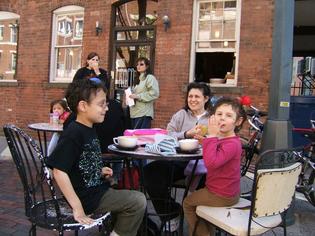
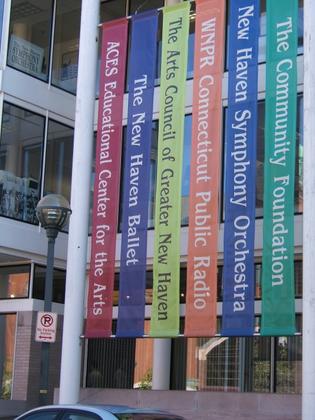 No, not in the flesh. The urban prophet died this week. But her ghost was everywhere on Audubon.
No, not in the flesh. The urban prophet died this week. But her ghost was everywhere on Audubon.
Jacobs wrote the seminal book on how cities like New Haven were destroying their souls through urban renewal. The book, called The Death and Life of Great American Cities, came out in 1961. It detailed how urban planners were destroying lively, varied neighborhoods and replacing them with cold, inhuman buildings that sucked away the street life. New Haven did more of that per square foot than any other American city in the 1950s and ’60s. Jacobs envisioned the renewal of cities like New Haven through streets that once again mixed stores, homes, communal centers, all kinds of people mingling together on single blocks and reclaiming the cityscape from cars. Her ideas fueled the modern “new urbanist” movement. She died Tuesday at 89.
Jacobs discovered what makes cities work by sitting on a sidewalk and just watching who walks where and does what with whom.
If she had been sitting Wednesday afternoon on the sidewalk on the block of Audubon Street between Orange and Whitney, which community institutions gradually rebuilt into an urban arts mecca over the past three decades, Jacobs would have certainly been pleased. She would have seen her spirit living on.
She would have seen people of all ages and races, from seniors to little kids and in between, bumping shoulders. She would have seen families (photo above) enjoying an outdoor snack by Koffee?, one of two joints on the block with outdoor tables. She would have seen the banners of arts and other community organizations flying in the air (other photo above.)
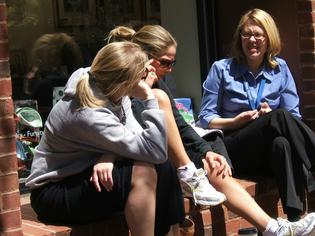 She would have seen people sitting inside the brick surrounding store windows, mingling with friends…
She would have seen people sitting inside the brick surrounding store windows, mingling with friends…
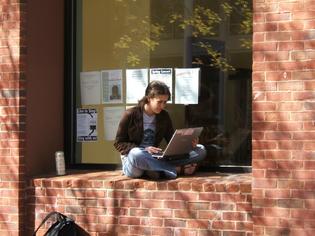 … or working a keyboard.
… or working a keyboard.
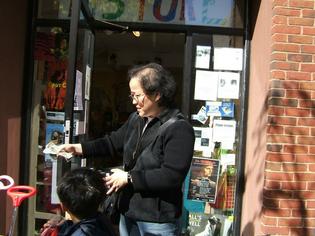 She would have seen people waiting on benches for friends at Neighborhood Music School or Creative Arts Workshop. Or shopping at the toy store or jewelry store.
She would have seen people waiting on benches for friends at Neighborhood Music School or Creative Arts Workshop. Or shopping at the toy store or jewelry store.
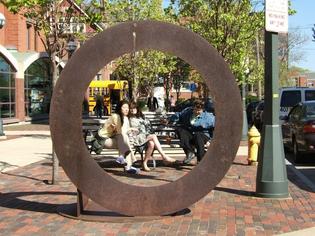 She would have seen people relaxing amid public art on a concourse that extends the sidewalk well into the street as a gathering place for humans, taking precedence over cars relegated to a slow-moving, narrow curving lane.
She would have seen people relaxing amid public art on a concourse that extends the sidewalk well into the street as a gathering place for humans, taking precedence over cars relegated to a slow-moving, narrow curving lane.
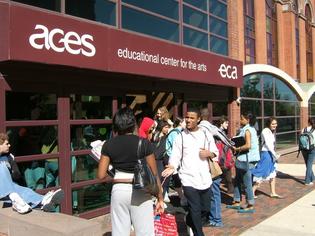 She would have seen high-schoolers from New Haven and towns throughout the region emerging from classes at the Educational Center for the Arts.
She would have seen high-schoolers from New Haven and towns throughout the region emerging from classes at the Educational Center for the Arts.
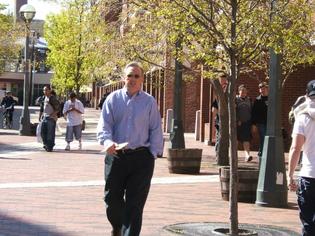 She would have seen the students cross the paths of middle-aged professionals working in law and architects’ offices.
She would have seen the students cross the paths of middle-aged professionals working in law and architects’ offices.
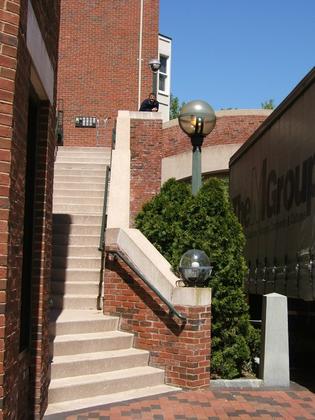 Her eyes would have wandered up the stairways of the tasteful brick apartments and condos that plant people on the block throughout the day and night.
Her eyes would have wandered up the stairways of the tasteful brick apartments and condos that plant people on the block throughout the day and night.
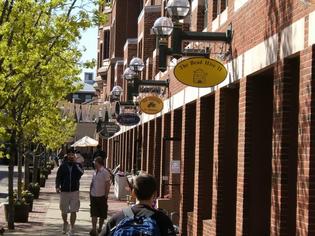 On Audubon Wednesday, Jacobs would have seen distinctive storefronts and shop windows belonging to locally owned, non-chain businesses run by local people.
On Audubon Wednesday, Jacobs would have seen distinctive storefronts and shop windows belonging to locally owned, non-chain businesses run by local people.
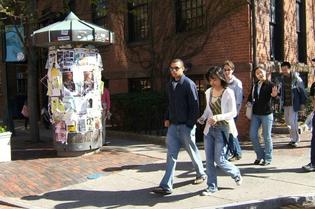 And she would have recognized the way Audobon Street people get their news about public events: flyers tacked onto a central kiosk.
And she would have recognized the way Audobon Street people get their news about public events: flyers tacked onto a central kiosk.
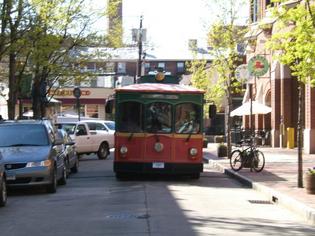 She would even have seen a trolley carrying passengers — like in those halcyon pre-automobile days. (Even though, in this case, it’s a bus dressed up as a trolley.)
She would even have seen a trolley carrying passengers — like in those halcyon pre-automobile days. (Even though, in this case, it’s a bus dressed up as a trolley.)
She would have seen all that — and it would have been just a typical afternoon. It would not have been an afternoon like, say, the Arts & Ideas festival, when crowds swarm in for colorful one-day events. Even on just another Wednesday, Jane Jacobs would see what the rest of us see everyday — her legacy.




"New Haven did more of that per square foot than any other American city in the 1950s and '60s."
That is simply not true. In fact, quite the opposite. Yes, New Haven spent a lot of money on its projects on a per capita basis, but the city is, overall, quite well preserved. More of New Haven's land area is a National Register Historic District (National Park recognized for its historic character) than any other city in the United States.